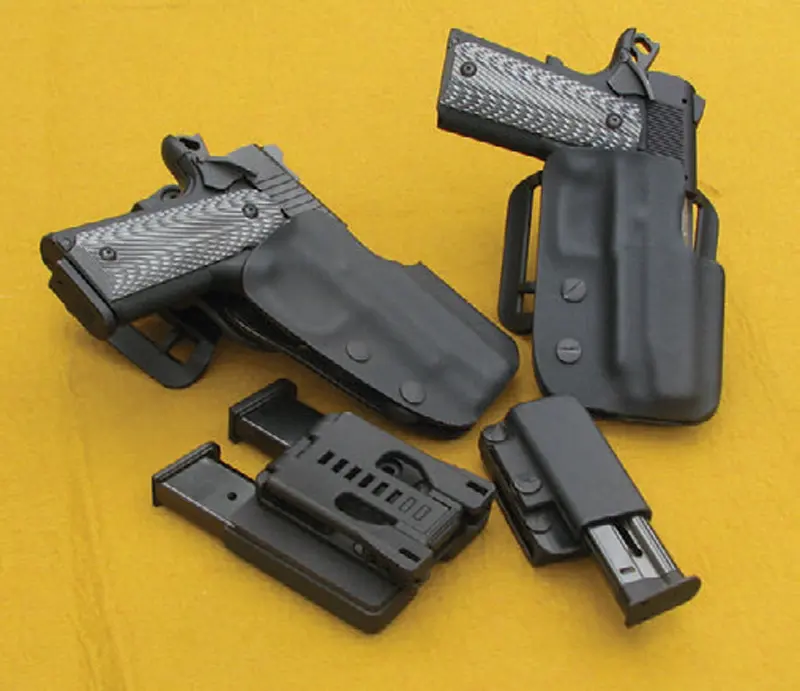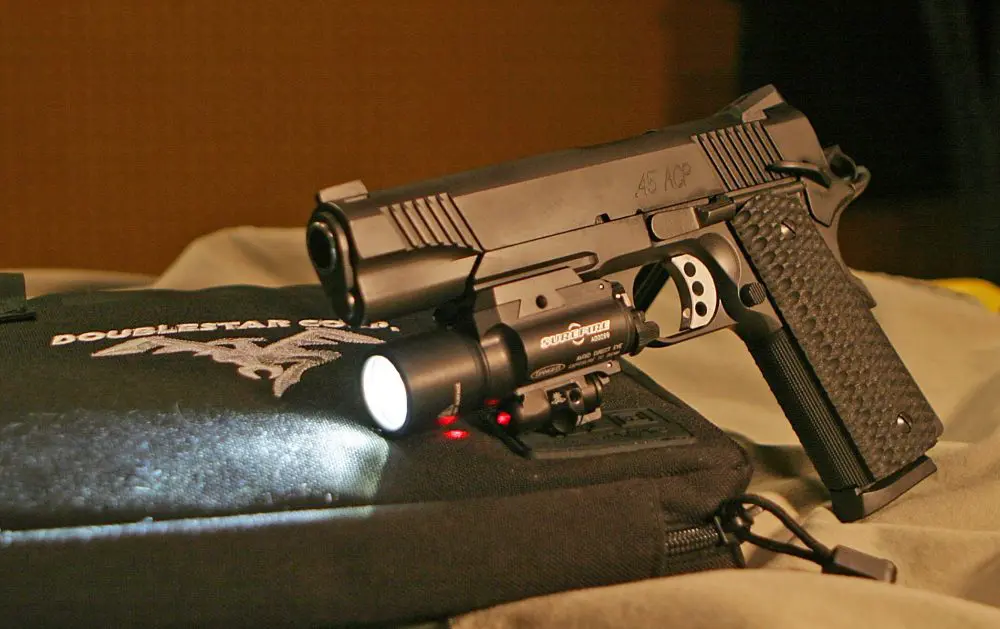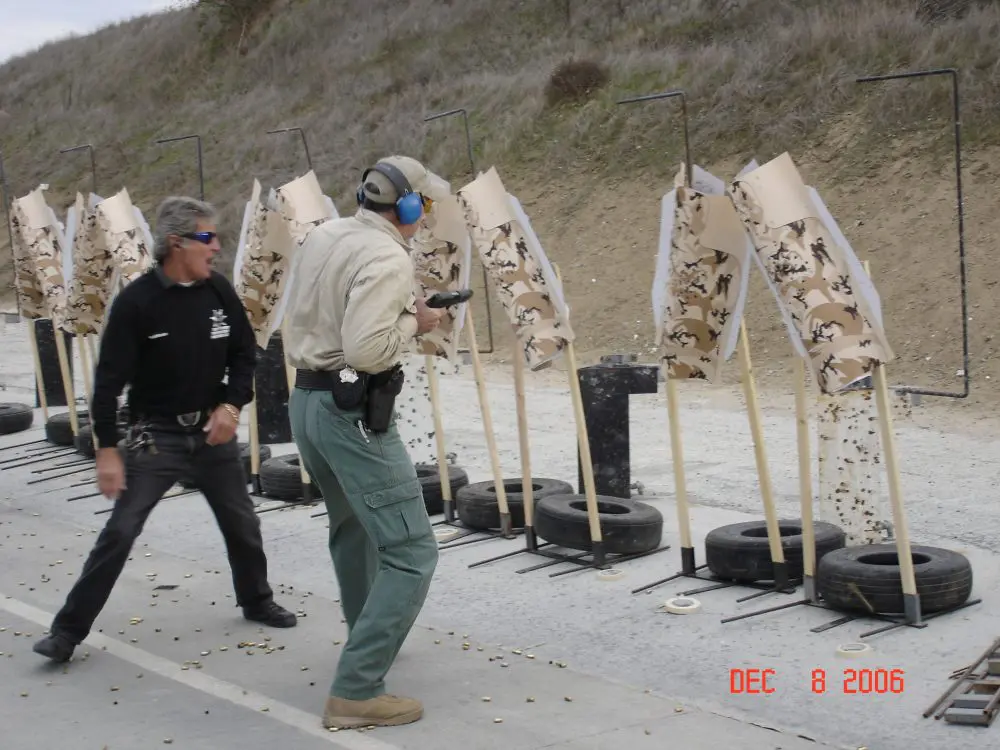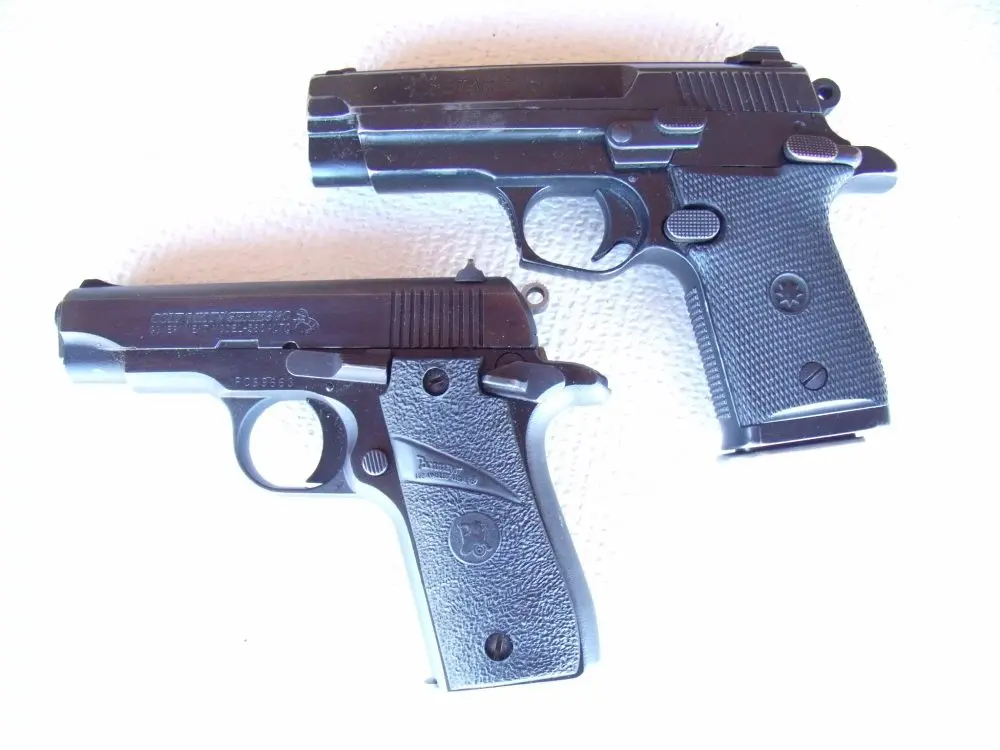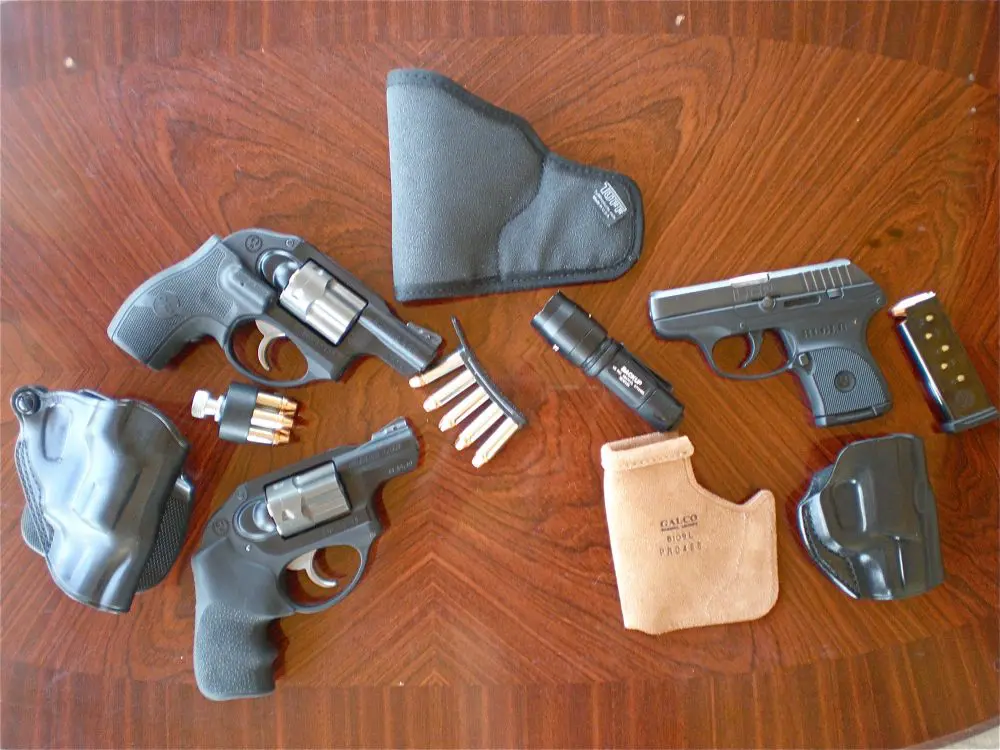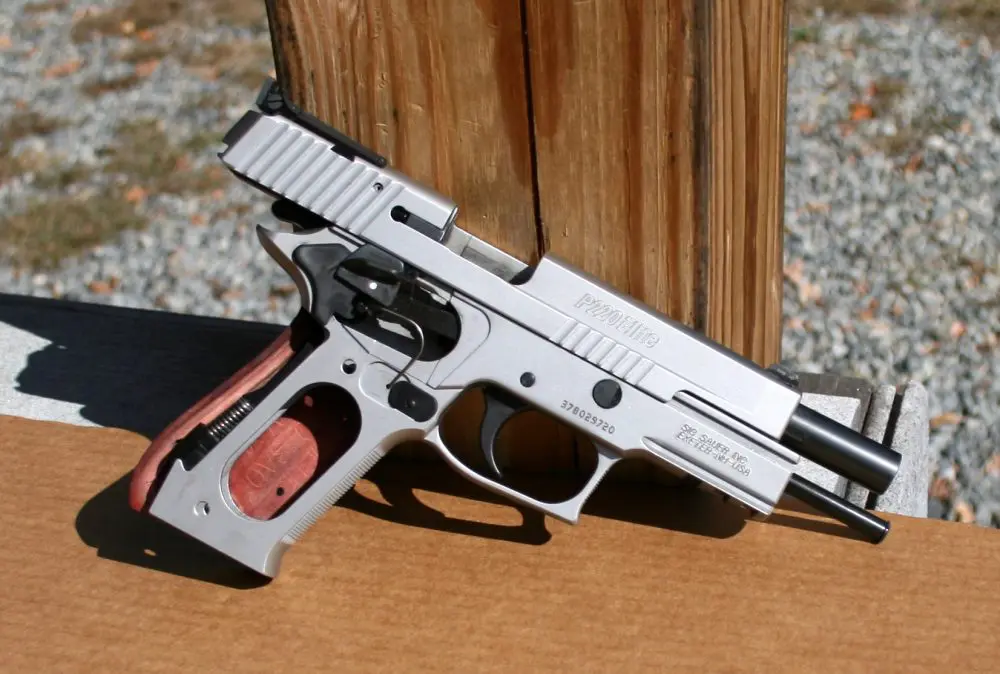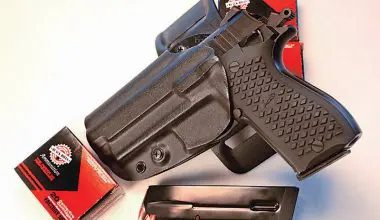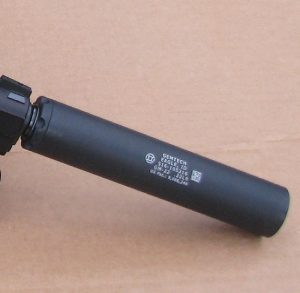 I have a usual first-day route through the SHOT Show each year—regular stops with companies I know and trust to produce quality gear. One of these stops is Browning.
I have a usual first-day route through the SHOT Show each year—regular stops with companies I know and trust to produce quality gear. One of these stops is Browning.
I’ve written two articles on the Browning Black Label pistols, in .22 Long Rifle (LR) and .380 ACP. Chapter Three in the Black Label saga: a suppressor-ready .22 and a compact .380.
Table of Contents
BROWNING BLACK LABEL
All Black Label models have a composite frame, machined steel slide and barrel, fixed combat sights, skeletonized hammer and trigger, ambidextrous safety, and solid upswept beavertail grip safety.
The compact models have a barrel ¼-inch shorter than the standard models; the suppressor-ready models have taller fixed, three-dot sights; and several models have a light rail. Depending on the model, the weight varies from 13 to 18 ounces— light enough to carry for days on your belt or in your ruck.
The suppressor gun is nearly identical to the rail model already offered by Browning. This gun has nicer G-10 stock panels, taller sights, and an extended threaded muzzle with a muzzle cap. The .380 was nearly identical, but with night sights and no threaded barrel. I requested and received one of each for this article.
The .22 was just like the other three .22s I’ve tested: light, reliable, and accurate. I fired seven different loads by major manufacturers, from subsonic to hyper-velocity, 350 rounds total, with no malfunctions.
I’ve found the same reliability in all four guns. Regular S.W.A.T. readers know I’m more concerned with how guns work than absolute accuracy, and I have yet to be disappointed with the Black Labels in either caliber.
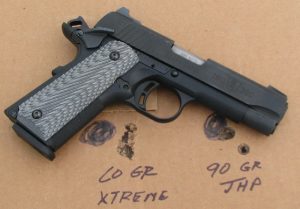
But a reliable gun that won’t hit a school bus is worse than useless. Accuracy requirements are up to each individual, but I figure if I can hit a bird or a bunny out to ten yards or so, it’s good to go. The Black Label is not a match target pistol, but it will do the above nicely.
I’ve usually found that the higher the velocity of .22 ammo, the less accurate it is. Standard and subsonic loads usually group better, and I only intend to shoot small game with the gun. If I decide to use the .22 as a backup gun, I’d use a higher-velocity hollow point instead of a slower lead bullet.
I’ve been shooting for 60 years, and it still puzzles me that one gun will “like” one load over another. This little .22 preferred the standard-velocity Winchester 40-grain lead bullet, at 1,255 feet-per-second (fps) to the other standard-velocity loads I shot. At five yards, the Winchester shot a nice fiveshot group, all touching but one, which was a quarter-inch left. Pretty decent for an out-of-the-box micro pistol.
SUPPRESSED SHOOTING
A suppressor-ready pistol needs to be shot with a suppressor, so I screwed my Gemtech GM-22 onto the threads. There is no way to attach a can without muzzling your hand, so always remove the mag, lock the slide open, and inspect the chamber. I suggest you never skip this step, trusting the safeties— be paranoid and non-trusting. I shot Remington, CCI, and Gemtech subsonic loads.
Of the subsonic loads, the Gemtech 42-grain round at 1,020 fps had all five rounds touching. The CCI subsonic shot nearly as well but strung out to about half an inch. The worst performance of my subsonic ammo was from the Remington, which shot about one inch. It figures: I bought 5,000 rounds of Remington subsonic a few years ago, when subsonic was hard to find.
I removed the ultra-light (2.5 ounces) GM-22, shot three more groups, and saw no shift in point of impact.
LOW-LIGHT SHOOTING
Since the sneaky little gun has a rail, I had to try it with a light. I mounted a SureFire X200, threw a few empty cans onto the driveway, and waited for dark. I loaded all five magazines with the Gemtech subsonic ammo. It was pitch black by 1630, so out I went.
I shot the first two mags slowly, working the light and a step in tandem. Once I had it dialed in, I’d step, light, shoot, light off, step. With a combination of gun, light, suppressor, and ammo that weighs just over a pound, it was quick and accurate.
I had so much fun that I reloaded the mags and went out for round two. On the serious side, it’s a good way to train without breaking the bank or angering the neighbors, and none of us do enough low-light live-fire training.
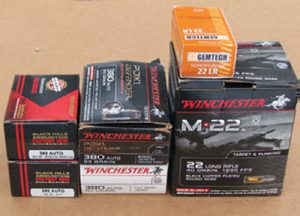
The .380 ACP round was designed by John Moses Browning, so it’s come full circle. The .380 performed as well as the .22, but on a little shot of steroids. The gun is the same size, as are the magazines, so it all fits in my SheepDog Knife & Gun Kydex holsters.
QUAL COURSE
After cleaning and a couple mags of ball, I decided to shoot it through one of my qualification courses. I made a couple of modifications to the Alaska State Trooper qual, shortening the times and adding lateral movement in two stages. It includes failure drills, six rounds from 25 yards, and one-handed shooting. Max score is 240 points. I shot it on a standard IPSC Brussels target, using Winchester 95-grain FMJ.
The gun was hitting a little right, but functioned and grouped well, especially for a 4.25-inch barrel. The four headshots were in the box, in time, and the gun did well in controlled pairs and hammers.
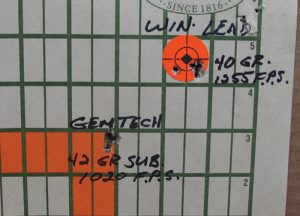
The six shots at 25 yards strung up and right, with two out of the “A” zone, resulting in a 238 score. You’d have to be really optimistic or really desperate to shoot this little gun at 25 yards, but if you had to, you can hit the target.
Ball ammo is fine, but a JHP is a better defensive choice for a carry load. I fired 50 rounds of Speer 90-grain GDHP, which functioned well with decent accuracy.
Next I shot 50 rounds of Winchester PDX1 95-grain bonded JHP. If bark equals bite, it would be a better choice. It had a very slight bit more muzzle flip but was more accurate. I fired five slow rounds at five yards. All were to the right, but four were through one hole, with one flyer to the right.
The Black Hills 90-grain JHP shot a little better and hit my steel gong a little harder. The 60-grain JHP Extreme Defense shot a slightly larger group, so the BH 90-grain round will be my carry round in this gun. The combination of a good pistol and good ammo results in an effective small defensive package.
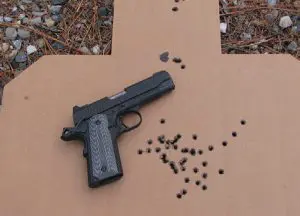
CUSTOM WORK
I decided to buy both guns, so they’ll need trigger jobs. Both are California compliant, meaning they have magazine- disconnect safeties. I’ve never understood the reason for this stupidity, but it is California….
On most guns so equipped, simply removing this abomination does a pretty good job of cleaning up the trigger, but I sent both guns to SheepDog Knife & Gun for one of Jon Grossman’s trigger jobs. The results are clean, crisp four-pound triggers and improved accuracy.
I’ve only found one consistent problem with the little Black Labels—my hands are too big. It’s difficult for me to depress the grip safety and keep my thumb on top of the thumb safety if I’m drawing and shooting quickly. I sometimes find myself having to adjust my grip in order to get that first shot off. It’ll take a while, but I’ll figure it out.
The best defensive handgun is the one you have on you. I usually carry a Colt Commander in .45 ACP, strong side, and two spare mags, and a second gun, sometimes a Black Label .22 in a bellyband, on the weak side.
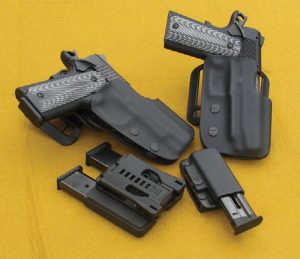
But if I have to run to town on a quick errand, I sometimes don’t take the time to dress. I’ve been known to drop a snubby revolver in a shorts pocket, or the .380 in an IWB holster under a T-shirt, and carry a reload for each. Neither gun is ideal, and I have better ones, but either is better than my smiling face and empty hands if the balloon goes up at the grocery store. As Clint Smith says, I don’t want to “die stupid,” so at least I’ll have a chance.
LADIES’ CHOICE
In the firearms training courses I teach, I’m getting a lot of first-time women shooters. The ages are 20 to 25 or 55 and over, living alone. I start them all on a .22 and move them to better calibers as appropriate. Many want to stay with a .22, some like the .380, a few want a 9mm, but no one wants a .40 or a .45. I’d rather they hit well with a lighter caliber they will carry with them than wish for the .45 at home. Either of these guns fits that bill.
Browning just added a new compact .380 with a light rail, which I will evaluate in the near future. Now, if Browning would only take the same path and build this quality and affordability in both a Government and Commander-size 9mm and .45….
